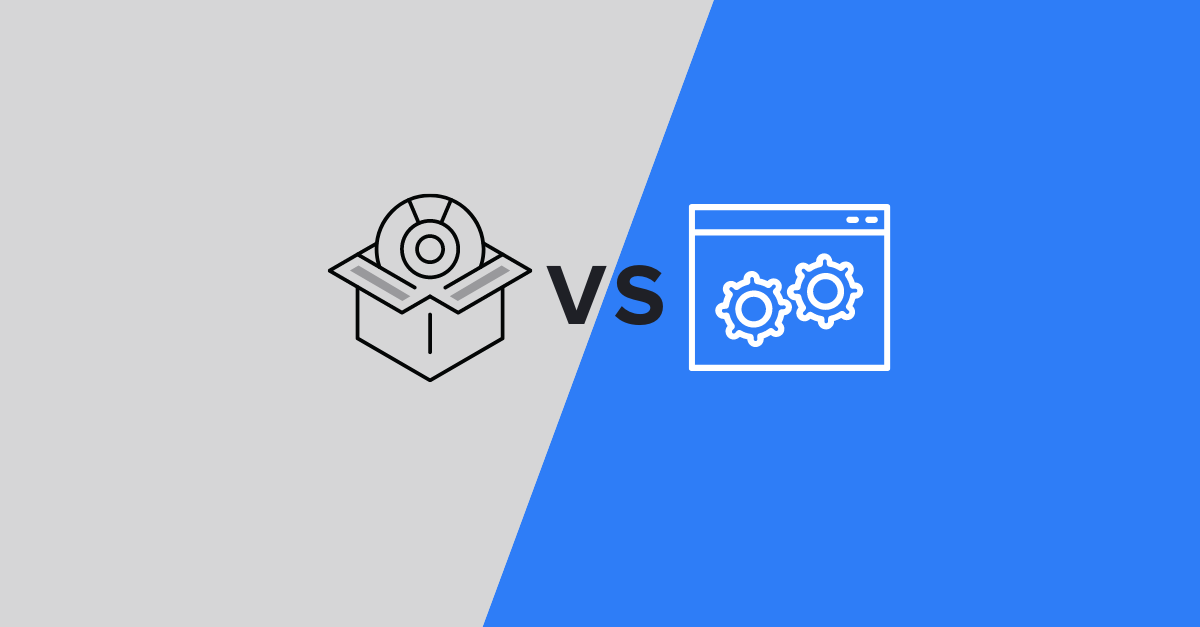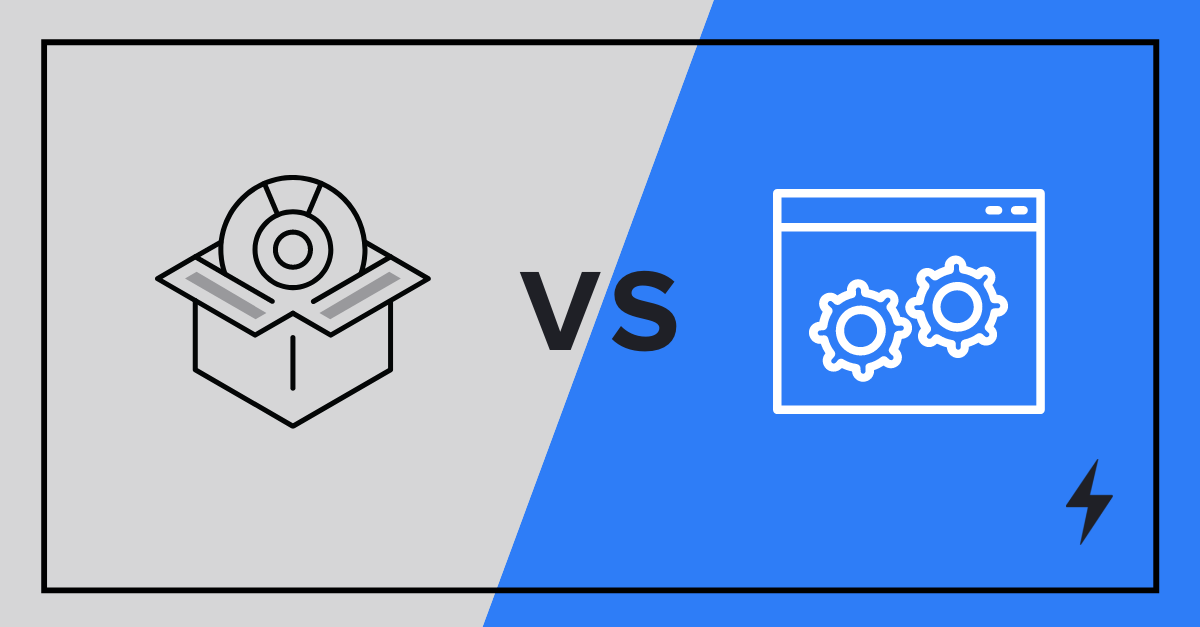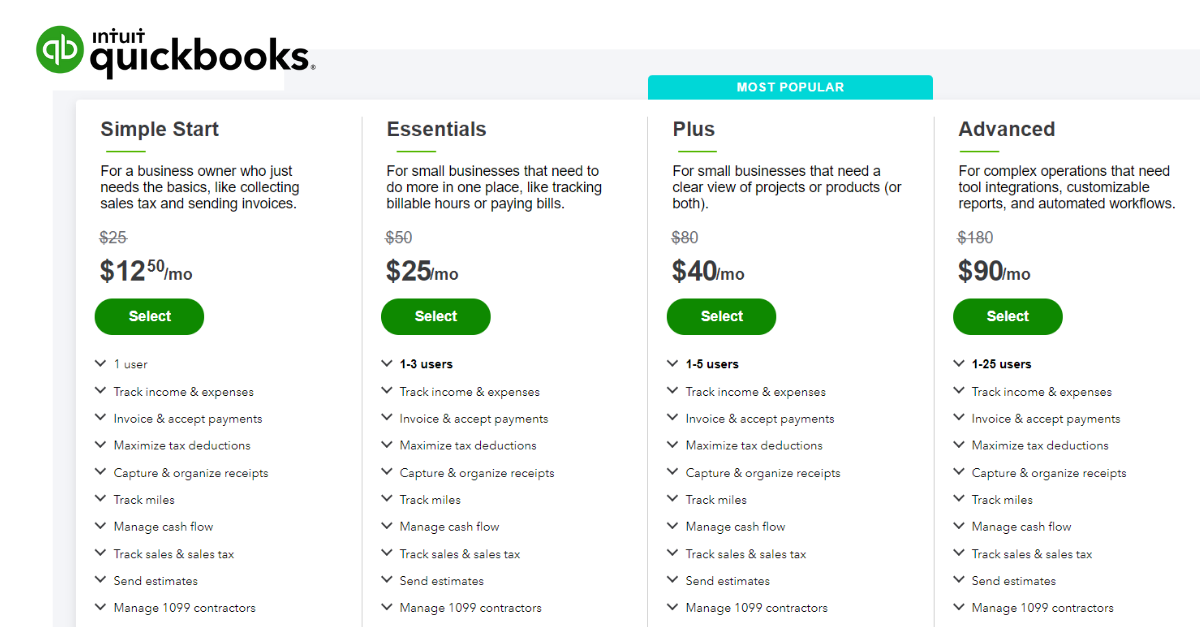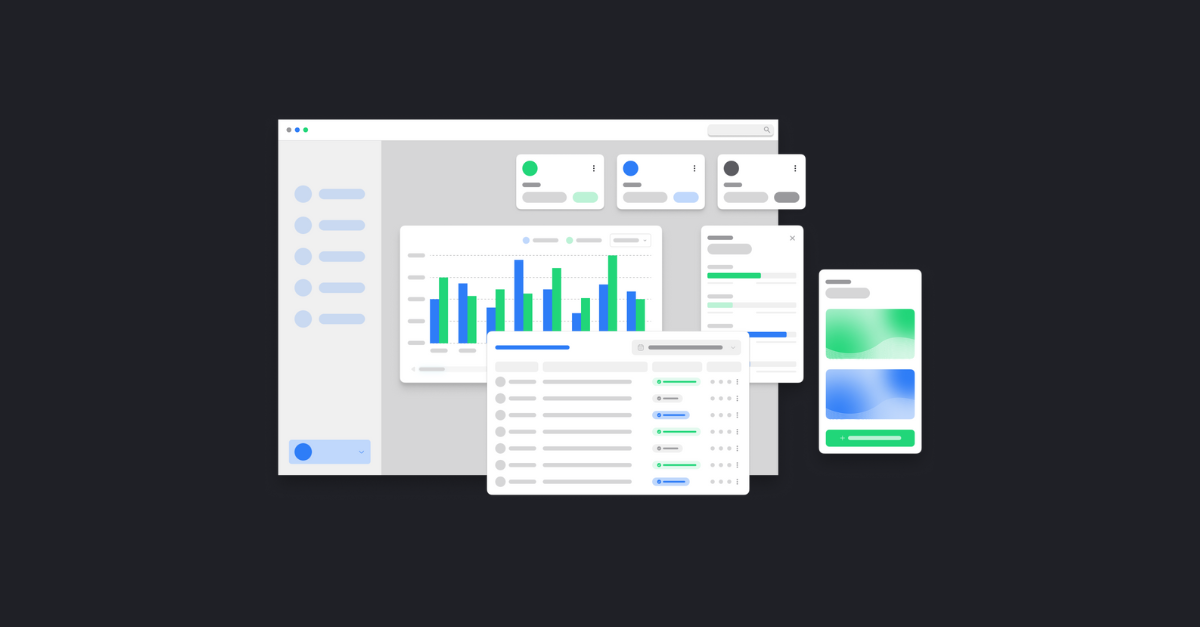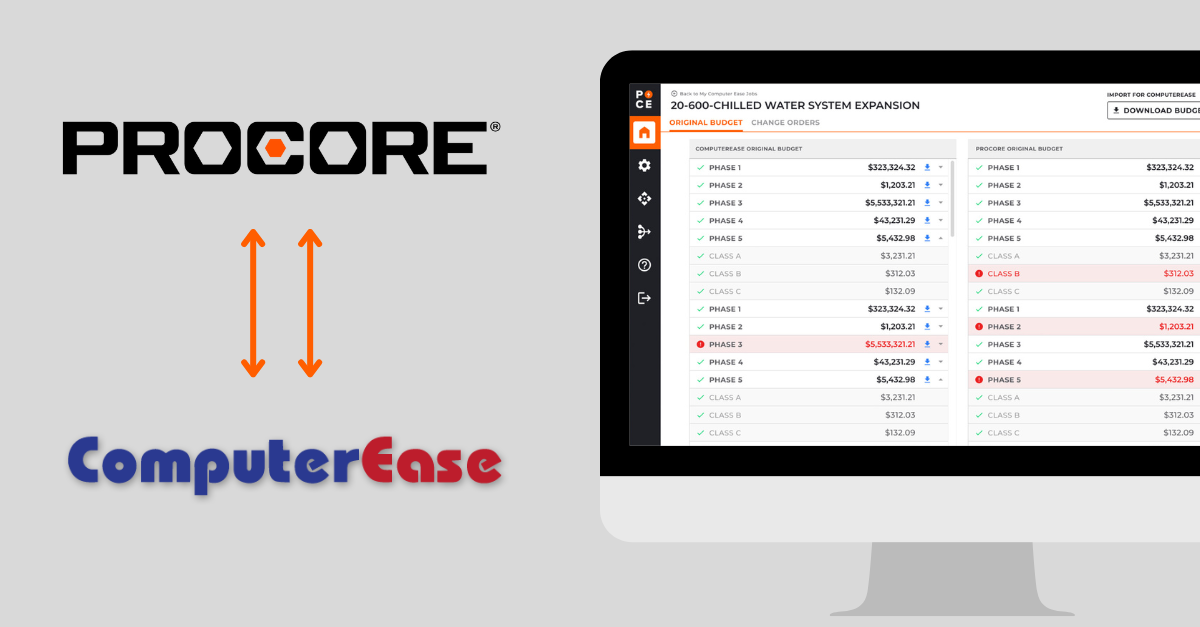Total cost is a major consideration when choosing new business software.
By instinct, you might want to go with the lowest upfront cost. While easier to do, that mindset doesn’t always best serve your business in the long run.
What about the big picture? How will this software decision impact your business over the next 3, 5, even 10 years? How will this software affect your ability to deliver for your customers or evolve your operations?
But it’s complicated (and sometimes frustrating) to compare approaches that are as different as off-the-shelf and building custom software. Don’t worry though, we’ll break it down below so you can make an informed decision.
First, a Quick Overview of Off-the-Shelf and Custom Software
Before you get deep into the details, here’s a quick refresh of each software approach.
SaaS: Pre-built software product that is meant to meet the needs of a mass market. You license it from a vendor and access it via the internet. You don’t have to buy hardware, install, maintain or update it yourself. (It’s also known as pre-packaged, out-of-the-box, or off-the-shelf software.)
Custom Software: Developed to meet the exact needs of a single company. It’s built from the ground up by external or internal software developers and designers.
While there are distinct advantages and disadvantages to each approach, cost is often an important, if not, the deciding factor.
But these are two fundamentally different approaches to software, so their pricing models reflect that.
For example, with SaaS software, you (and hundreds or thousands of others) are paying a vendor for access to the same set of features. Their costs are passed on to you in a certain way.
Custom software, on the other hand, you work with software developers to build, test, and deploy a unique product for the use of your company only. There are many factors, like the product’s scope and timeline, that determine the total cost of development services.
Keeping that in mind, let’s dive into how to compare the two.
SaaS Pricing Models and Examples
There is a lot of variety in SaaS pricing, so we’ll cover the most common ones here.
Whatever the model though, your cost will likely consist of two things:
- Subscription Cost: You pay some sort of regular fee for continued access to the product and automatic maintenance and upgrades. Subscriptions can be licensed month-to-month, quarterly, bi-annual, or annual contracts.
- One-time Implementation Fee: At the beginning, you can pay a one-time fee for the set up and training of the product.
For off-the-shelf software, your subscription covers your license to use the software for a specific period. The exact terms of your license will be set forth in the small print of your agreement with the SaaS company.
But how will that subscription amount be determined? Here’s a few common ways that SaaS companies price their products.
1. Flat Rate
The most basic, but less common model is a flat-rate subscription fee. Every user pays one amount for access to the same features, number of users, and so-on.
Is the flat rate model good for subscribers? It depends on how much you use the software.
If you use the software only a little, then it could be a bad deal if the price is high. But if you’re a high-volume user, then it could be worth it.
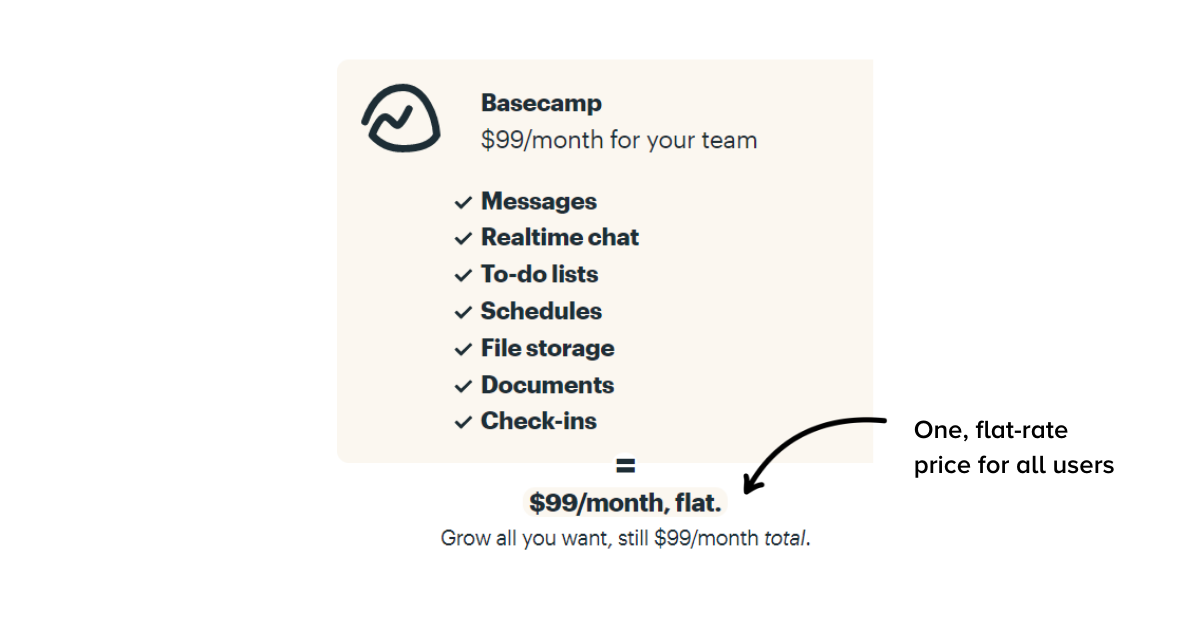
2. Usage-Based
Think of use-based plans like your cell phone plan. You pay a variable amount each month based on some factor(s) like: data volume, number of users, API calls, etc.
In general, usage-based pricing can be great for smaller companies who are just starting out. They can get access to advanced features for a lower price based on their minimal use. Or, for enterprise companies if they can scale their expenses up or down as needed.
But as teams grow, per-user or data volume monthly licensing fees can really start adding up and be difficult to manage. You could end up paying more and more, but without any real increase in the value of the product. (Remember you’re not necessarily paying for more features.
While some products will offer usage-based models, it’s common to find products that combine tiered pricing with some usage-based factors like number of users.
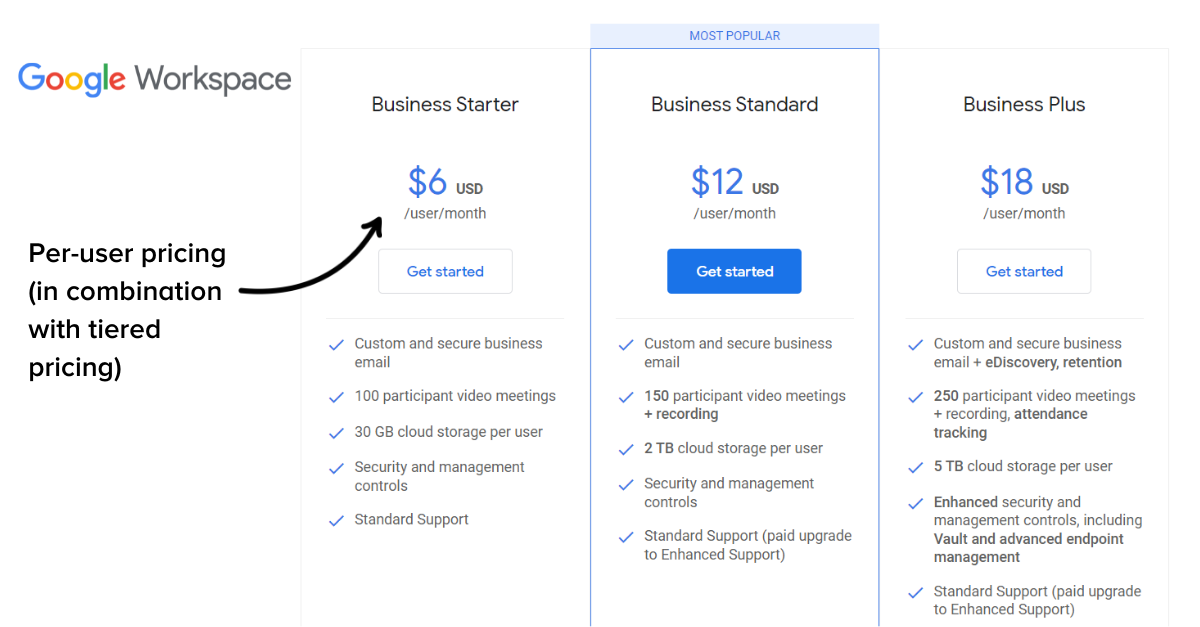
3. Tiered Pricing Model
In this common model, the vendor will offer a variety of packages (likely 3 to 4). As prices increase in each package, you’ll get more features, users, etc.
For some, the tiers will match up nicely with how your business grows. You’ll move up as your business warrants more advanced features.
However, you could also be sucked into paying significantly more for a higher tier just for access to a single feature you need.
The Verdict on SaaS Product Pricing
In general, off-the-shelf software is appealing for its pricing structure. Subscription fees can be straightforward and predictable. They also cover any of the software vendor’s ongoing maintenance, hosting, and upgrades to their solution.
However, businesses can grow tired and frustrated with SaaS costs and product limitations because they feel like:
- Being nickel and dimed for growth (constantly rising prices for more features, users, etc)
- Tools aren’t always user-friendly
- Software doesn’t fit needs exactly, still leaving (costly) inefficiencies and workarounds
- Inability for software to integrate into other existing platforms
- Lack of control or flexibility in fully customizing the product
As costs add up for SaaS products over time, owners have to question whether the software is truly serving their business and bottom line.
Custom Software Pricing Models
Custom software development is priced as a traditional professional service. You work with a software development partner to define the scope and budget of the project. Then the client is billed for the hours of work as the software product is developed.
In general, custom software will require a higher upfront investment than using an off-the-shelf solution because it’s a more thorough process. You have to plan, design, develop, test, and launch a custom solution (an entire software development life cycle).
So what then are the main factors that go into the total cost of your project?
- Size: A small project could be a simple mobile app with a few screens, while a large project could be a custom web platform with multiple modules.
- Complexity: More complex projects can include data integration into multiple systems, database needs, or extensive UX/UI design.
- Development Team Size: Project type and complexity can determine the number of resources needed like – one or multiple developers, along with a UX/UI designer, project manager and a systems analyst.
- Timeline: Projects can vary in length from 1 to 3 months to several.
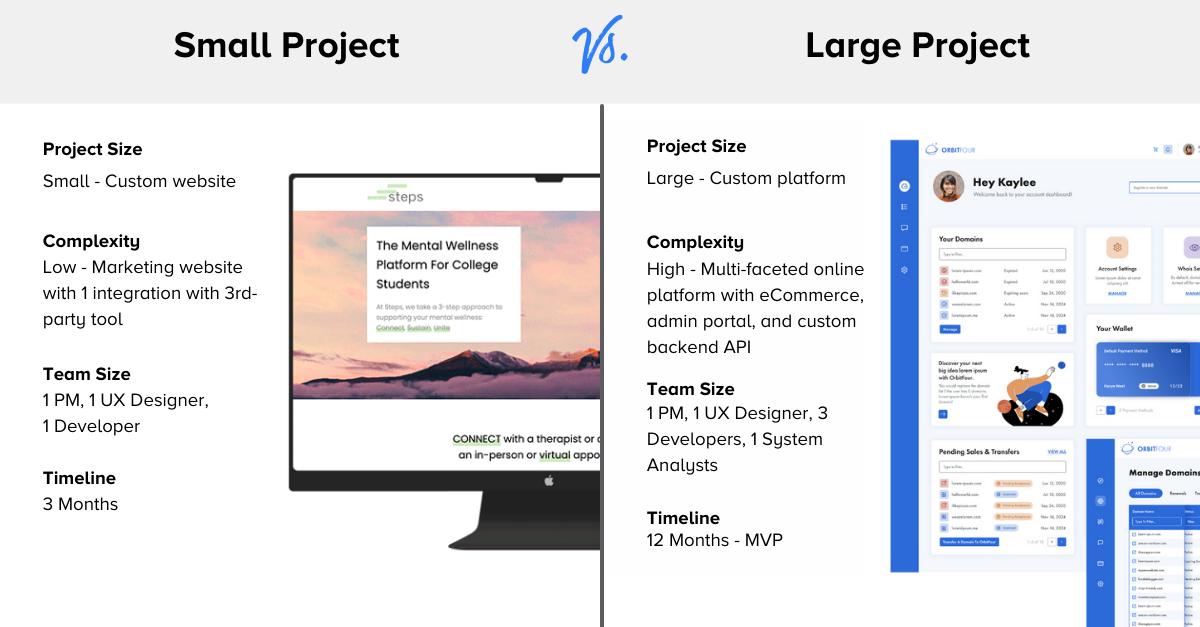
Custom software projects are often delivered in phases. So, costs are spread out and determined by the time and effort of the developers during each phase.
At SPARK, for example, our team builds projects through a 4-step process:
1. Assessment
Before writing any code, you work with your software partner to first assess your business needs and technical requirements. This results in a product roadmap that includes your budget, timeline, and technical plan of what to build. Learn more about SPARK’s assessment process.
2. Architecture/Design Planning
You engage in short workshops with your partner that result in data maps and interactive prototypes and wireframes of the software. User research and testing help validate the design of the product (and minimizes risk of building the wrong thing).
3. Development
Using agile methods, software developers write lines of code that turns your idea into a working software product.
4. Go-Live and Support
Your partner works with you to test and launch the solution. They can also provide training to ensure a smooth implementation. After go-live, you’ll likely sign on for a maintenance package that can be used for support and continuous improvement (unless you have an internal team to support completely.)
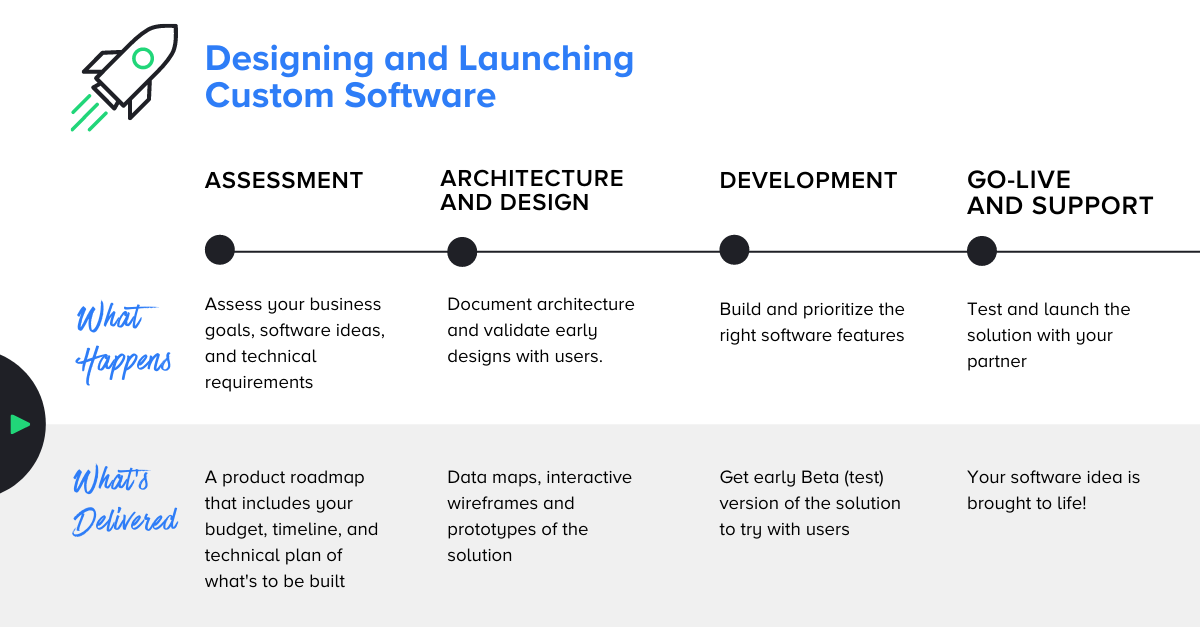
Ultimately, the cost of custom software is estimated by the number of hours it takes the software developer’s employees to build it.
What’s the best way to control costs? To diligently manage your project’s scope. You should work closely with your development partner to understand what features are being built (and why) and avoid distractions that aren’t actually needed.
Comparing SaaS v. Custom Software Pricing
The best way to compare SaaS and custom software costs is through a long-term, holistic view.
That is, you can’t compare the cash outputs that either path will require in the first few months. Instead, you have to look at the total costs over time (1, 3, 5 years), along with business impact.
A SaaS solution is likely going to be less expensive than custom software in the short term. But as your team grows, the monthly fees can really add up. You might end up being forced to pay for features you don’t use or need. And you don’t have the ability to influence the product’s development to meet your company’s needs.
While custom software development will require a larger investment upfront, it can still represent a better ROI over time because:
- The product can meet your exact business needs and processes
- You can build in phases at your own pace (achieve initial ROI before adding more)
- You have total flexibility to mold and change the software as your business grows in 3, 5, or 10 years from now
 SPARK Tip: There can also be unexpected advantages of owning your software like maximizing tax benefits or white labeling your product as an additional revenue stream.
SPARK Tip: There can also be unexpected advantages of owning your software like maximizing tax benefits or white labeling your product as an additional revenue stream.
Further, there are ways to reduce the upfront costs of custom software development. Today’s modern technology and agile development practices give companies options for building custom products within their timeline and budget.
You can start with a minimum viable product (MVP) that delivers the minimum amount of features needed to solve the users’ problem (or pain point). You don’t have to build everything from scratch, either. You can leverage existing software and/or integration through APIs to build something custom on top.
Calculating Your Own ROI
The best way to think about software is not as a cost, but as an investment. Like any investment, it should only be made after considering the return that you will get.
We’ve put together a guide to help you calculate the return on investment you are likely to get from new software. Read the guide here, and use it alongside our free ROI worksheets. It’ll help you visualize and determine the cost/benefits of either approach.
Choosing the Right Approach
At the end of the day, cost is always going to be an important factor in your final decision. But it can be complicated to compare two approaches like off-the-shelf and custom. You have to look beyond the upfront numbers and consider the impact of the software on your business in the long run.
Below are some more questions that can help you compare the two approaches.
- How serious is the problem/need? Do you need a single tool to solve it? Or do you need strategic tech that elevates “how you do business?”
- Have you tried off-the-shelf software in the past? Did it work well or not? If not, then it’s probably worth trying a different approach.
- Do you have existing software systems that you’d like to continue using? Check the integration capabilities and choose the solution that gives you the best options.
- Do you have a proprietary process that gives your business an advantage? Developing custom software can help you amplify this advantage.
Want to learn more about custom software? Read these articles next.
- Why Successful Businesses Build Custom Software Over Off-the-Shelf
- Custom Software: Why An Assessment is Worth Your Time and Money
Or, if you’re ready, reach out to SPARK to discuss your project idea.

